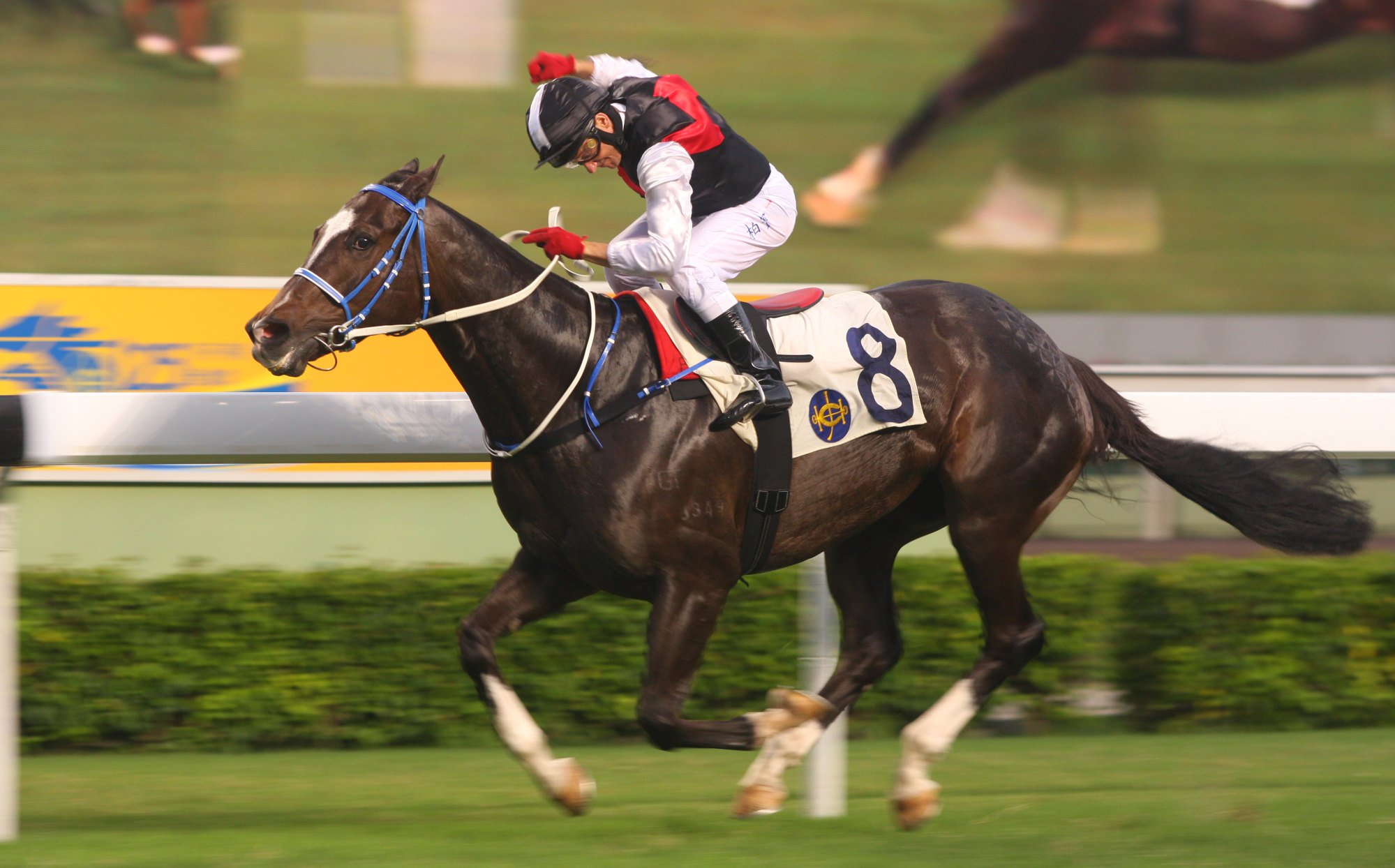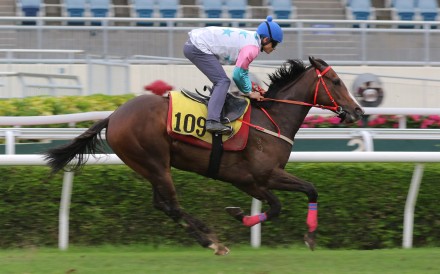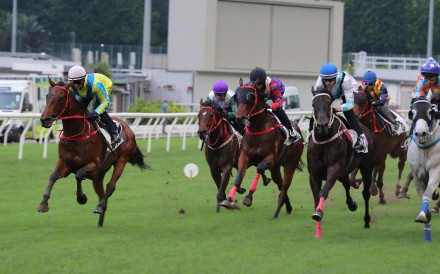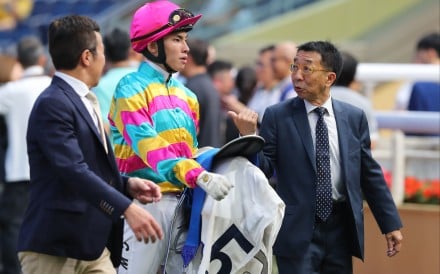He’s the most expensive horse to ever represent the Racing Club and the Jockey Club hopes Young Champion can capture the imagination of Hong Kong’s “young elite”.
Believed to have been bought for around HK$6 million after beginning his career with one win from four starts in Ireland, Young Champion will be the Racing Club’s first Class Two runner in almost three years when he chases a second Hong Kong win at start three this weekend.
With victory, the exciting four-year-old would become just the second horse to salute at Class Two level or above in the near 17-year history of the Racing Club.
Young Elite is the only galloper to reach any great heights in the Racing Club’s black, red and white colours, twice saluting at Class One level under the tutelage of Caspar Fownes and even running in a couple of Group Ones on his way to a rating of 117.

Outside Young Champion, Young Elite and a couple of others, however, is a rather motley crew of horses who seem more likely to turn people away from the racecourse than bring them in.
Of the 27 horses listed as being owned by HKJC Racing Club Limited dating back to its first horse, Young Label, who won on debut in 2008, 11 were retired without winning a race and 13 of the 20 who are no longer racing were unable to rise beyond their starting rating.
While the general consensus is that members just love being part of the whole racecourse experience, there’s little doubt that enjoyment has largely come in spite of results on the track.
Now, though, the Jockey Club is “getting serious” about further fostering the Racing Club as a key driver among a wider push to attract new owners, according to chief executive Winfried Engelbrecht-Bresges.
Bullish Ng believes Shinn is the perfect partner for Galaxy Patch
Established in 2007, the Racing Club was designed as an entry-level way to “promote racing as part of the ultimate lifestyle for a member of the young elite” and enable “young racing enthusiasts to expand their knowledge and become true racing connoisseurs”.
Racing Club members don’t actually have a share in the horses that race in their colours, but rather “can have the opportunity to experience the excitements of horse ownership” while enjoying the on- and off-course facilities and member events that come with the HK$148,000 entrance fee and monthly subscription of HK$1,500.
Racing Club members are also allowed to become separate syndicate members and own a share of a horse in their own right, while the Jockey Club is exploring the possibility of operating syndicates within the Racing Club.
The Racing Club is already serving as a pathway for its members to go onto become fully fledged horse owners as Jockey Club racing members and full members, but officials believe potential for further growth is significant at a time when increasing the city’s horse population is a key focus.

“The Racing Club is one of the real drivers of horse racing interest and horse ownership,” said Engelbrecht-Bresges, confirming the club has been attracting about 120 new members a year.
“We have 1,600 Racing Club members and 50 per cent are under 30. When you look at how many of them have become racing members and how many of them have an ownership, they outperform other member categories by the factor of four.
“We have around 100 programmes a year and then we see what their interest is. When they fulfil this criteria, they can be promoted to become racing members and then they are members and can own horses in their own right.
“We will further expand the Racing Club facilities and we think we will be able to attract another 1,000 members in the next five years.”
Ng must embrace the unconventional as Patch’s owner insists on Derby push
Young Champion is central to this plan right now and Racing Club members will also hopefully have last year’s Group Two German 2,000 Guineas (1,600m) winner, now named Young Achiever, to cheer on soon.
“When you look at value proposition, what is the biggest value proposition? It’s a good horse. We want to buy really good horses to create the interest and bring people into racing and ownership,” said Engelbrecht-Bresges.
While in the past sourcing horses for the Racing Club has occurred under a restrictive budget and has had an element of randomness, the Jockey Club is hoping a far more streamlined approach to buying under the guidance of Hong Kong International Sale executive manager Danny Rolston will lead to a sustained run of superior bloodstock.
There also seems to be a much more pointed effort being made to give the horses to some of the better trainers, with Young Champion the first Racing Club horse to represent John Size in a decade and the likes of Tony Cruz, David Hayes, Douglas Whyte and Jamie Richards also boasting Racing Club gallopers in their stables.

The Racing Club is also in the midst of a leadership shake-up, with the Australian Turf Club’s head of racing and wagering, James Ross, to join the Jockey Club in the coming months in a role focused on “ownership development including Racing Club”.
The theory of buying “really good horses” looks set to be tested sooner rather than later, with a couple of recent purchases, who are yet to be named, coming to Hong Kong from maiden wins in soon-to-be-defunct Singapore.
They are among seven active Racing Club horses – Engelbrecht-Bresges believes seven to 10 is the optimum number – and their purchase is part of a concerted effort to increase horse numbers after a period where the spending pressures and travel restrictions of Covid, more general economic challenges, and the sheer cost of firstly obtaining quality bloodstock and then paying the exorbitant training fees have all contributed to a downturn in quantity.
“We are getting serious because this is our future growth,” Engelbrecht-Bresges said. “We are trying to generate interest at all levels of ownership.
“We have a clear strategy if you look at horse ownership that we want to be at the optimum number [around 1,300-1,350] within the next two and a half years,” he added of a horse population that sat at roughly 1,230 on Thursday.
“Good horses drive interest and James McDonald said he is a really good horse.”
Over to you, Young Champion.





















